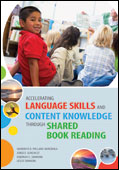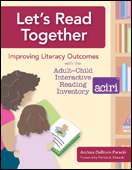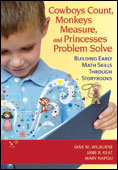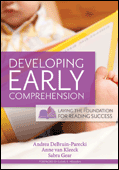Shared book reading: How you can help close the word gap
The word is out!
RESOURCES TO SHARE
Books Build Connections Toolkit
American Academy of Pediatrics (AAP) and partners
includes colorful handouts with tips for sharing books with children by age group
Beyond the Word Gap
ZERO TO THREE
multimedia resources to help parents, professionals, and policymakers
Thirty Million Words™ Initiative
University of Chicago Medicine
a parent-directed program to help parents “tune in, talk more, take turns”
The Talking Cure
by Margaret Talbot, The New Yorker
article about one town’s effort to close the word gap using LENA technology (described as “word pedometer”)
More Than Baby Talk
Frank Porter Graham Child Development Institute
10 practices early childhood teachers can use to foster language and communication skills among infants and toddlers

 Interactive book reading—asking questions, pointing to pictures, providing additional information, talking about life experiences—moves children from being passive listeners to being active learners
Interactive book reading—asking questions, pointing to pictures, providing additional information, talking about life experiences—moves children from being passive listeners to being active learners



